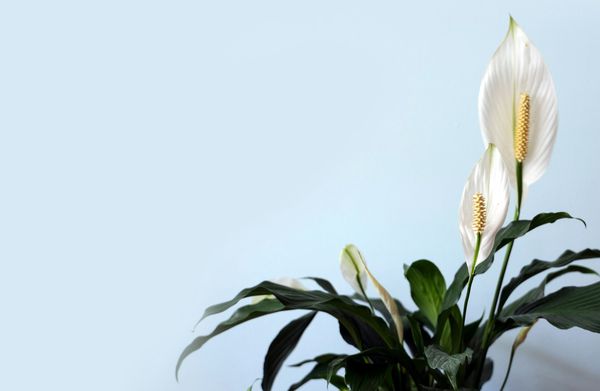Peace Lily Care Guide
How to grow and care for Peace Lily (Spathiphyllum spp.)
Welcome to the world of Spathiphyllum spp., commonly known as the Peace Lily. These elegant and low-maintenance indoor plants are beloved for their lush dark green leaves and striking white flowers. Peace Lilies are native to tropical regions of the Americas and Southeast Asia, which means they thrive in warm, humid environments. They are not only aesthetically pleasing but also known for their ability to purify the air, making them a popular choice for home and office spaces.

Disclosure: This content includes affiliate links, which means we may earn a commission if you click on a link and make a purchase. As an Amazon Associate, we earn from qualifying purchases. This comes at no extra cost to you and helps offset the cost of running Leafwise. Please read our disclaimer for more info.
Table of Contents
Care
Light
Peace Lilies prefer low to medium indirect light, making them suitable for indoor environments with limited sunlight. Direct sunlight can scorch their leaves, so it’s best to place them in a location where they receive filtered or indirect light. While they can tolerate low light, brighter conditions encourage blooming.
Watering
Water your Peace Lily when the top 1-2 inches of soil feel dry to the touch, typically about once a week. Be cautious not to overwater, as they are susceptible to root rot. Use room temperature water to avoid shocking the plant. Peace Lilies also appreciate high humidity, so consider misting them regularly or placing them near a humidifier.
Humidity & Temperature
Peace Lilies thrive in moderate to high humidity. Ideal temperatures are between 65-80°F (18-27°C). Avoid cold drafts, air conditioners, and sudden temperature changes to prevent stress on the plant.
Soil
Use a well-draining, rich potting mix. A soil blend containing peat moss and perlite is ideal for maintaining moisture without causing waterlogging.
Fertilization
Feed with a balanced, water-soluble fertilizer diluted to half strength every 6-8 weeks during the growing season (spring and summer). Avoid fertilizing in fall and winter when the plant’s growth slows.
Maintenance
Pruning
Remove yellow or brown leaves regularly to maintain the plant’s appearance and health. Trim flowers once they fade to encourage new blooms.
Cleaning
Wipe the leaves with a damp cloth to remove dust and improve light absorption. This helps the plant photosynthesize efficiently and promotes growth.
Repotting
Repot every 1-2 years, preferably in the spring, when the roots outgrow the pot. Use fresh potting soil and a slightly larger container to accommodate growth.
Propagation
Peace Lilies propagate best through division:
- Select a mature plant – Choose a plant with multiple healthy clumps.
- Remove and divide – Carefully remove the plant from its pot and gently separate the root clump into smaller sections. Ensure each section has at least 2-3 leaves and a portion of the root system.
- Repot – Place each division in its own pot with fresh soil and water lightly.
Common Issues
Yellowing Leaves
Cause: Overwatering or inadequate light.
- Solution: Check for soggy soil and reduce watering if necessary. Ensure the plant receives bright, indirect light. Trim yellow leaves to promote new growth.
Brown Leaf Tips
Cause: Low humidity, inconsistent watering, or exposure to fluoride in tap water.
- Solution: Increase humidity by misting the plant or using a humidifier. Use filtered or distilled water to avoid fluoride buildup.
Drooping Leaves
Cause: Underwatering, overwatering, or temperature stress.
- Solution: For underwatering, water thoroughly and ensure consistent soil moisture. If overwatering, let the soil dry out before the next watering. Keep the plant in a stable, warm environment.
Pests (Spider Mites, Mealybugs, Aphids)
Cause: Dry indoor conditions, over-fertilization, or poor airflow can attract common houseplant pests like spider mites, mealybugs, and aphids.
- Solution: Wipe leaves with a mixture of water and mild dish soap to physically remove pests. Apply insecticidal soap or neem oil every few days until the pests are gone. Improve humidity and airflow by misting the plant and using a fan if necessary. Isolate affected plants to prevent infestations from spreading.
Root Rot
Cause: Overwatering or poor drainage.
- Solution: Remove the plant from its pot, trim off any rotting roots, and repot in fresh, well-draining soil. Reduce watering and ensure the new pot has drainage holes.
By following these care guidelines, your Peace Lily will thrive, adding elegant greenery and beautiful white blooms to your indoor space.
